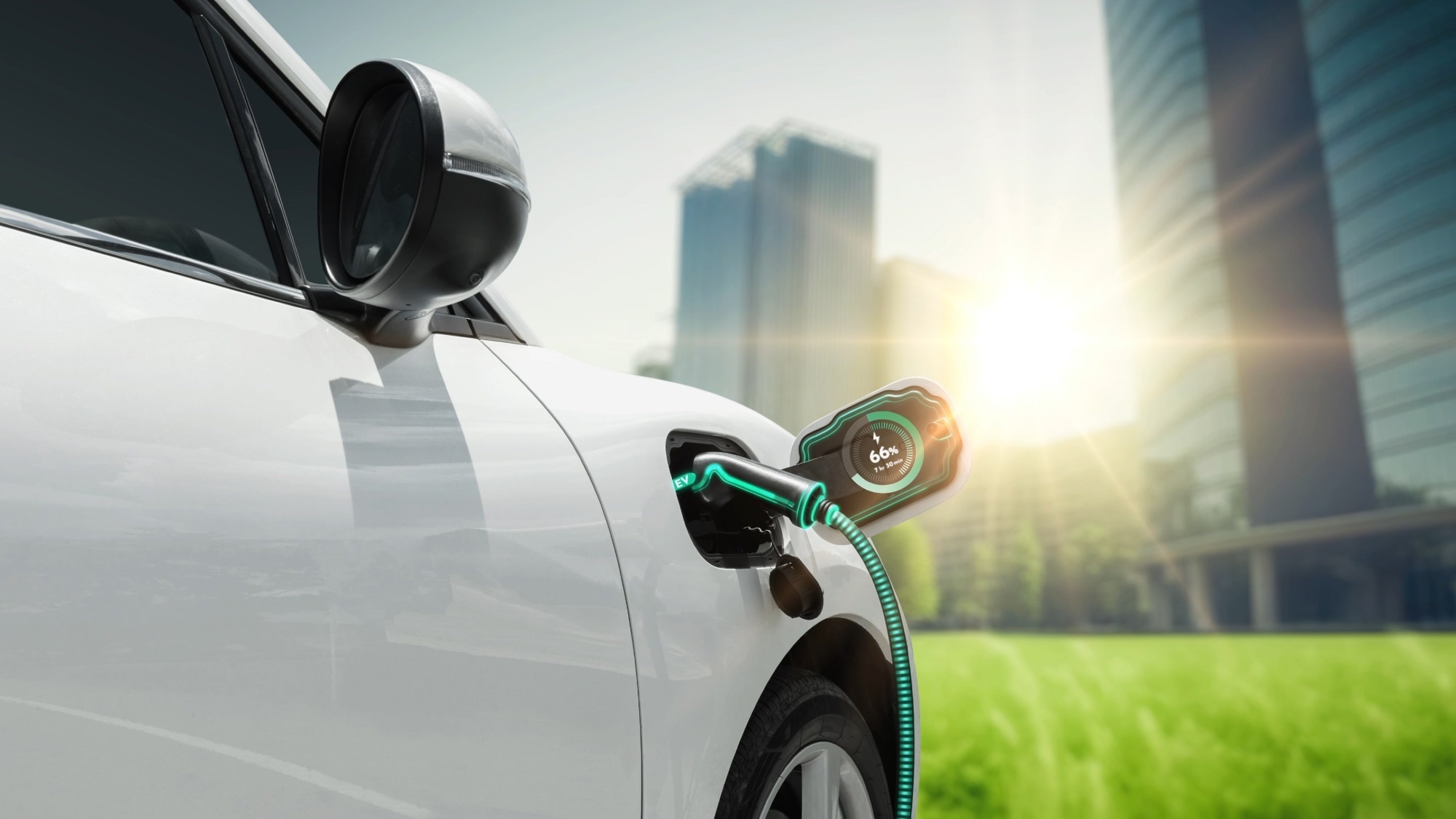In an article in press with the journal Green Energy and Intelligent Transportation, researchers proposed an economic lane change decision-making method based on vehicle-to-everything (V2X) communication technology to improve the energy-saving potential of connected electric vehicles (EVs).
 Study: Optimizing EV Energy Efficiency with Smart Lane Changes. Image credit: Owlie Productions/Shutterstock
Study: Optimizing EV Energy Efficiency with Smart Lane Changes. Image credit: Owlie Productions/Shutterstock
Background
In recent years, researchers have increasingly focused on reducing the energy consumption of EVs and improving their driving range, with several studies being performed on energy-saving driving methods and energy management systems for EVs.
The energy management in EVs depends on energy recovery efficiency and torque distribution as the powertrain of these vehicles only consists of an electric motor. Thus, many studies have utilized motor torque optimization methods, such as reinforcement learning and fuzzy control, to improve energy savings through torque distribution and motor efficiency optimization.
Additionally, energy-efficient driving planning for various scenarios can effectively increase the economy of EVs. The best economic performance can be achieved through efficient vehicle control and planning using advance information on the surrounding vehicle status and traffic conditions. However, future driving information is not entirely accessible in real-world situations.
The rapid advancements in intelligent network technology and fifth-generation (5G) technology have enabled vehicles to collect information from their surrounding environment through V2X communication technology and predict their future state of driving.
The prediction capability improves the efficiency of speed planning and energy management. For instance, studies have used V2X to obtain advanced information on traffic lights and generate optimal control principle-based optimal speed sequence. Similarly, a model predictive control (MPC) framework that integrates vehicle-to-infrastructure (V2I) and vehicle-to-vehicle (V2V) information was used for plug-in hybrid EVs to optimize vehicle economy and improve prediction accuracy.
Importance of lane selection
Although the above methods can reduce vehicle energy consumption to a limited extent, they cannot resolve the vehicle energy optimization constraints imposed by the current lane. Recently, several studies have demonstrated lane selection as a crucial driving behavior. Lane selection is influenced by several factors, including energy consumption costs, lane efficiency, personality of the driver, and safety. Effective selection of lanes can significantly improve vehicle fuel economy.
Several studies have evaluated the impact of lane selection and lane change on traffic efficiency and safety. However, only a few studies have investigated the impact of lane selection on EV energy consumption. Both energy-saving driving and safe driving can be realized, and the adaptive cruise system economy can be improved significantly by providing reasonable lane suggestions to drivers.
Smart electric vehicles hold the potential to generate suitable lane suggestions to improve the EV economy through lane change decisions as intelligent networked/connected vehicles have been designed to eliminate traffic congestion, reduce pollutant emissions and fuel consumption, and improve road safety in the existing road transport system.
A novel lane change decision method
In this paper, researchers proposed a V2X-based economic lane change decision-making method to increase the energy-saving potential of intelligent connected EVs. Initially, researchers conducted the traversal test of EVs at various accelerations and speeds to develop an energy consumption cloud model reflecting the mapping relationship between EV power, acceleration, and speed.
Subsequently, the traffic flow information from the V2X was utilized to train the particle swarm optimization (PSO)-optimized long short-term memory neural network model (PSO-LSTM) for predicting the future vehicle speed in front of every lane. The vehicle power performance corresponding to the predicted speed of the vehicle was obtained based on the developed energy consumption cloud model.
Eventually, an analytic hierarchy process (AHP)–based lane change decision method was developed and applied in four typical parallel scenarios to investigate the effectiveness and robustness of the proposed lane change decision method. Researchers performed simulation tests in a simulated urban traffic environment involving continuous lane change and single-lane change scenarios.
Simulink, Prescan, and Carsim software-based experimental simulation platforms were used in this study. Carsim was used to provide the host vehicle’s vehicle dynamics model, Prescan was utilized for traffic flow configuration and to provide the simulation environment, and Simulink was employed to construct the control model, decision model, and energy consumption model of the host vehicle.
Significance of the study
Simulation results demonstrated the robustness and energy-saving effectiveness of the proposed lane change decision method in the single lane change scenario. In long-distance lane change scenarios, the energy-saving driving strategy of continuous lane change demonstrated better performance compared to the fixed-lane driving strategy by making timely and accurate decisions about the lane with the best economic performance for EV driving, which significantly reduced the EV energy consumption.
Overall, applying the proposed V2X-based economic lane change decision-making method improved the energy consumption by 27.2% in the continuous lane change scenario.
Journal reference:
- Pan, C., Li, Y., Wang, J., Liang, J., Jinyama, H. (2023). Research on the multi-lane energy-saving driving strategy of connected electric vehicles based on vehicle speed prediction. Green Energy and Intelligent Transportation, 100127. https://doi.org/10.1016/j.geits.2023.100127, https://www.sciencedirect.com/science/article/pii/S2773153723000634